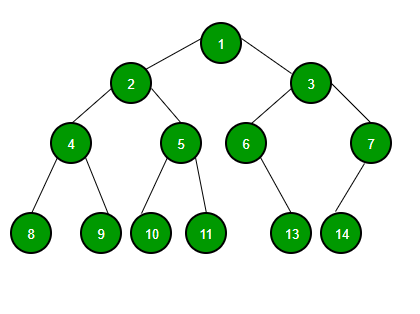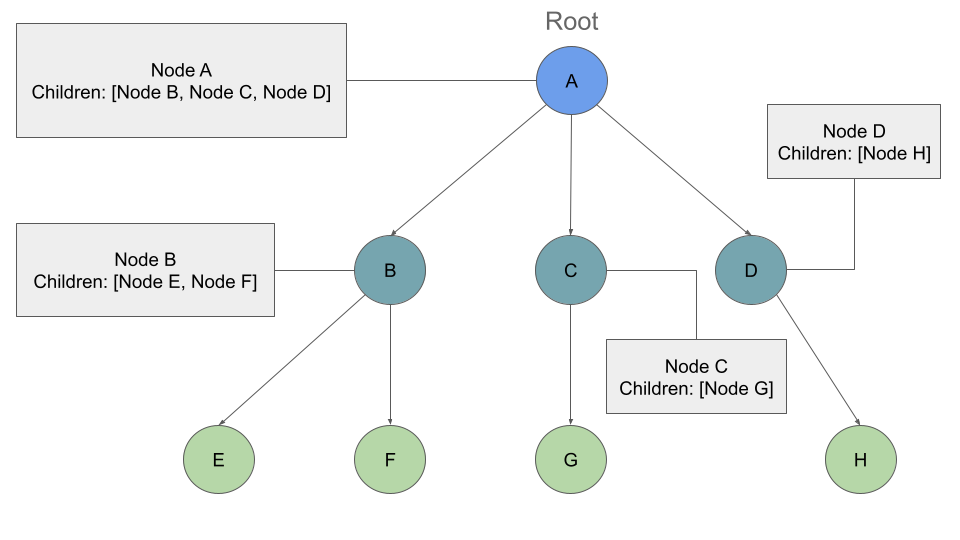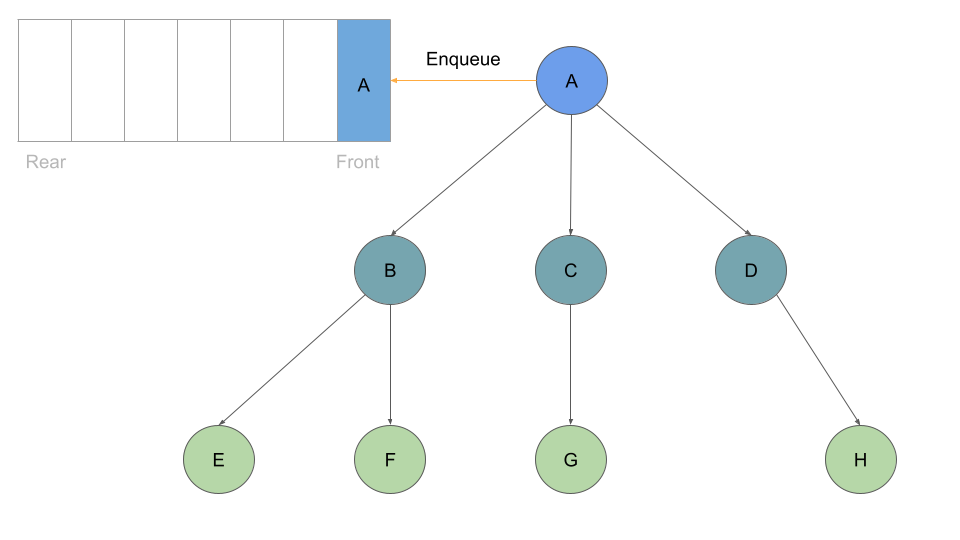reading-notes
Trees
A tree data structure consists of:
- Node - A Tree node is a component which may contain it’s own values, and references to other nodes
- Root - The root is the node at the beginning of the tree
- K - A number that specifies the maximum number of children any node may have in a k-ary tree. In a binary tree, k = 2.
- Left - A reference to one child node, in a binary tree
- Right - A reference to the other child node, in a binary tree
- Edge - The edge in a tree is the link between a parent and child node
- Leaf - A leaf is a node that does not have any children
- Height - The height of a tree is the number of edges from the root to the furthest leaf
Tree visual structure
Pseudocode for this traversal of a tree method
ALGORITHM preOrder(root)
OUTPUT <-- root.value
if root.left is not NULL
preOrder(root.left)
if root.right is not NULL
preOrder(root.right)
Binary trees
A tree whose elements have at most 2 children is called a binary tree. Since each element in a binary tree can have only 2 children, we typically name them the left and right child.

A Binary Tree node contains following parts.
- Data
- Pointer to left child
- Pointer to right child
Implementation
class Node:
def __init__(self, data):
# left child
self.left = None
# right child
self.right = None
# node's value
self.data = data
K-ary Trees
Traversing a K-ary tree requires a similar approach to the breadth first traversal.

If we traversed this tree Breadth First we should see the output:
Output: A, B, C, D, E, F, G, H


Pseudocode
ALGORITHM breadthFirst(root)
// INPUT <-- root node
// OUTPUT <-- front node of queue to console
Queue breadth <-- new Queue()
breadth.enqueue(root)
while breadth.peek()
node front = breadth.dequeue()
OUTPUT <-- front.value
for child in front.children
breadth.enqueue(child)
Summary
Types of trees:
- Binary Tree
- Binary Search Tree
- AVL Tree
- B-Tree
Tree operations:
-
Insert − Inserts an element in a tree/create a tree.
-
Search − Searches an element in a tree.
-
Preorder Traversal − Traverses a tree in a pre-order manner.
-
Inorder Traversal − Traverses a tree in an in-order manner.
-
Postorder Traversal − Traverses a tree in a post-order manner.
Trees applications:
- Binary Search Trees(BSTs) are used to quickly check whether an element is present in a set or not.
- Heap is a kind of tree that is used for heap sort.
- A modified version of a tree called Tries is used in modern routers to store routing information.
- Most popular databases use B-Trees and T-Trees, which are variants of the tree structure we learned above to store their data
- Compilers use a syntax tree to validate the syntax of every program you write.
